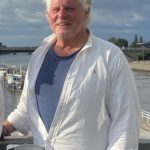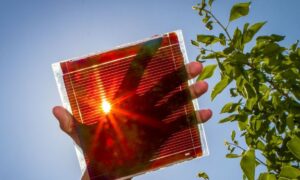(Editor’s note: The is the second in a series of posts about Eindhoven and the Netherlands.)
The Netherlands as a whole, and Eindhoven in particular, are curiously dichotomous.
This little corner of Europe is as talent-dense as anywhere in Europe, even Germany. But Holland is also one of the most conservative societies outside of Denmark.
Yes, I said “conservative.”
Pot and the sex trade might be legal, but the majority of Dutch are by some definition conservative, with a love of hierarchy and a bone-deep aversion to risk. This is not a society that embraces rebels or non-conformists. The Dutch love scheduling meetings where they will continue to meet until everyone arrives at a consensus. Technology must enhance, never disrupt. Steve Jobs would have lasted about eight seconds here.
Hardly the place for tech innovation, right?
Oddly, it is. Somehow – and I really don’t understand it at all – attraction to the gee-whiz factor trumps conformity.
Coming here to Eindhoven from the United States is like going to the future. If you think about the places in the United States that should be futuristic such as Silicon Vally, they really aren’t. You can summons Uber (which did a bellyflop here) with an app in San Francisco, but where are they already testing driverless cars? In the Netherlands.
The Dutch seem to be more interested in integrating the best of technology and the best of traditional life to create an almost friction-free advanced society.
To be sure, there are plenty of legacy anachronisms. For example, don’t try to use your foreign credit or debit card at the supermarket. Only American restaurants seem to take anything but local bank cards or cash.
But the Dutch are working on that, with the Netherlands at the forefront of fintech with Adyen.
Here’s my list of the crazy cool things that make going to the Netherlands like going to the future:
• Early adoption of technology:
A couple of weeks ago, I was walking in the main platz here in Eindhoven when I spotted a small glass and steel building that had miraculously popped up since the day before. In it, Samsung had set up an elaborate Oculus Rift-mated virtual reality display, with two high-tech cockpit-style seats on hydraulic arms for flight simulators.
In a recent interview in the German newspaper Die Welt am Sonntag, Mark Zuckerberg called VR a “new computing platform.” Now, here it was ….
The young techies working the simulator told me Samsung had created several of these elaborate modular display boxes for different parts of the Netherlands, each manned by seven employees.
After a week, the Eindhoven box was disassembled, then lifted onto a truck and sent off to Arnhem to the north. While it was here, it was full of kids every minute of every day, wanting to see what the future of computer games would look like.
What’s even more interesting is to see the nexus of high-tech manufacturing and the Netherlands’ traditional mode of travel, the bicycle. Students at Technical University Delft and techies at MX3D design and R&D studio in Amsterdam collaborated to create a 3D printed stainless steel bike.
So, hackers and makers in the Netherlands have already taken the first steps toward a future where we’ll custom design our gear on our computers or tablets, then print it out on our 3D printers. And that’s when we’re not working on the Internet of Things advancements for smart homes. (Another hot niche here.)
• Free (fast!) wifi on the trains, and even in the city center:
I don’t want to date myself, but I’ve been using personal computers since Jesus rode dinosaurs. There are two innovations that transformed personal computing from a novelty to an essential – the Internet and increased bandwidth and wireless connections allowing us to make the most of digital. Still, most major cities in the United States don’t even have fibre optic internet/cable backbone, and only 9 out of the 50 largest cities have Google fiber.
Eindhoven not only has fibre optic cable/Internet, there’s a free wifi network in the city center specifically constructed for reception outdoors and in the public squares. The website states indoor reception is “hardly possible,” but I’ve found that’s not really true. Right now, I’m sitting in the Coffeelab coffee shop that’s part of Eindhoven’s tourism complex outside the train station and running Dispatches just as if I were in my home office. Well, I can for an hour because that’s the daily limit. But still, it’s cool to be out and about in the city center and know you can whip out a laptop at an outdoor cafe and go to work.
Oddly, Amsterdam doesn’t have public wifi in its (way bigger) central area, so this is kind of an Eindhoven thing. (I know… you can do this is a lot of European cities. But only in the Netherlands can you do it in small cities.)
If you’re traveling in Holland (or really anywhere in Europe) you’ll find many – though not all – trains have wifi, as well. In the Netherlands, the train network can be kind of pokey, because everyone connects their smartphones to avoid using their data plans. But last summer, it was one of the highlights of my exploratory trip to Europe to find that I could work away online while zipping across Germany to Austria at 300 kilometers per hour. Will we ever be able to do that in the U.S., even in the distant future? Unlikely ….
Speaking of cable, researchers at Technical University Eindhoven developed a new type of fiber offering almost 20 times the bandwidth of conventional fibre optics. Back in late 2014, TU/e researchers working with their counterparts at the University of Central Florida, announced they’d transmitted a record 255 Terabits per second over a new type of fibre. (I looked it up, and the world’s fastest system in place at the time could transmit 32 Terabits per second.)
The TU/e-UCF project came up with a “multi-core” fibre cable, with seven cores instead of one in conventional fibre-optics. Multiple cores allow data signals from seven different laser sources to be transmitted simultaneously. Think how that’s going to enhance everything from stockmarkets and financial transactions to streaming entertainment categories and online computer gaming.
• Work
Conventional thinking goes like this: In the future, with robots increasingly handling the dirty, dangerous and monotonous labor, there will be more time for humans to focus on more satisfying pursuits.
I got a preview of the future here last week at the RoboCup European Open robotics competition in Eindhoven, where one of the demonstrations involved autonomous robots designed for rescues and emergency situations too hazardous for humans. Also, Technical Univeristy Delft just an hour or so northwest of Eindhoven, is one of the top robotics institutes in the world.
My bet is that it will happen here first. A 2015 Economist post states that 27 percent of men and 77 percent of women here work less than 36 hours a week. That’s compared to 9 percent of men and 32 percent of women in the rest of the European Union.
People don’t live to work in the Netherlands like we do in the U.S. In my conversations with Dutch people and my interactions with businesses, Dutch professionals tend to work to build up the resources necessary to travel and have fun … to enjoy life. Certainly there are workaholics here, but more often than not, when I contact someone for an appointment, I get an email back saying that person doesn’t work Fridays, and to contact a colleague.
• Architecture
Yes, the Netherlands has a lot of old buildings. But a number of Dutch cities were leveled during World War II, including Eindhoven and Rotterdam. I was talking with an attorney last week in Amsterdam, who asked why Dispatches is in Eindhoven. “That’s not a very attractive city,” he snorted.
Au contraire ... I think the mishmash of architecture is stimulating. In the future, most factories and warehouses will be converted to residential and office use. Which is exactly what has already happened here. Electronics giant Philips started in Eindhoven, but decamped for Amsterdam. All the old buildings the company left behind have been converted, or are in the process of being retrofitted and reused mostly as apartments and shared workspaces for the creative class per the Richard Florida model.
Moreover, the contemporary architecture here is as cool as any place in the world. Even little Eindhoven, pop. 220,000, has a crazy number of gleaming glass-and-chrome apartment towers. So you can can choose to live in a 300-year-old semi-detached house, or on the 27th floor in an open-plan apartment overlooking the city. Cool.
But it’s Rotterdam that’s earning accolades from architects as the “City of the Future.” In January, Dezeen, the digital magazine for architects, had a long post praising Rotterdam as a “world-class destination for architecture,” with dozens of experiments in futuristic office buildings, single-family houses and mixed-use developments.
• No garbage cans
In Eindhoven and other Dutch cities, there are very few unsightly garbage cans or dumpsters in the city center. Instead, there are discreet access canisters – accessible to the homeowner or employees of businesses via a code card – which is the only visible part of large underground trash containers city sanitation trucks hydraulically hoist out of the ground and empty.
 Speaking of city services, for days I walked around Amsterdam and Eindhoven with the nagging feeling something was missing.
Speaking of city services, for days I walked around Amsterdam and Eindhoven with the nagging feeling something was missing.
And then I remembered …. in Eindhoven, as in all Western European cities, power lines, telephone wires, TV cables and utilities are buried. Not only does this assure fewer outages, but it makes for a more aesthetically pleasing city.
• Underwear vending machines
We saved the most tantalizing glimpse into the future for last.
It’s true … you can buy sexy men’s underwear long after the stores are closed. Tennis legend Bjorn Borg has a chain of eponymous stores across Europe selling underwear for men and women, as well as sports apparel. In Eindhoven (and as far as I can tell, only in Eindhoven) there’s an “After Hours” vending machine in the big downtown mall where you can buy men’s briefs in little tennis ball cans anytime – night or day – for 25 euros.
Because you just never know what the future might hold, right?
Co-CEO of Dispatches Europe. A former military reporter, I'm a serial expat who has lived in France, Turkey, Germany and the Netherlands.


















